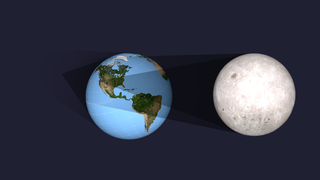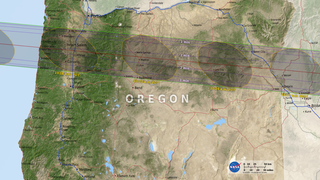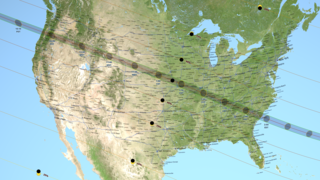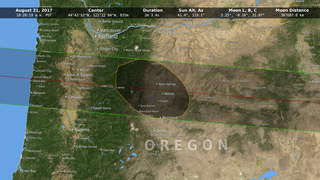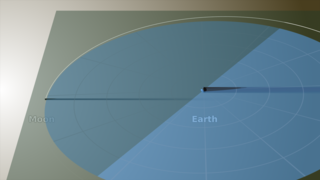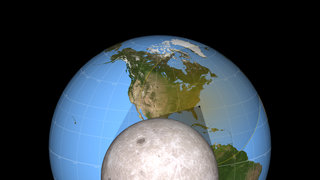Sun
Planets and Moons
ID: 12648
While the sun is the main focus of a solar eclipse, our moon plays the most crucial role in creating this unique event. This video tutorial explains what happens during a total solar eclipse and a partial eclipse and how often they both occur. The video also explains how a solar eclipse differs from a lunar eclipse, and gives a helpful tip on how to remember the difference. In addition, the video examines how the two parts of the moon’s shadow, the umbra and penumbra, affect how we see an eclipse on the Earth, and illustrates the surprising true shape of the umbra. The video concludes by highlighting how data from NASA’s Lunar Reconnaissance Orbiter has helped us better map a solar eclipse’s path of totality. Visualizations included in this piece showcase the August 21, 2017 total solar eclipse happening in the United States.
The Moon's Role in a Solar Eclipse
Related
Credits
David Ladd (USRA): Lead Producer
David Ladd (USRA): Lead Video Editor
Ernie Wright (USRA): Lead Visualizer
Noah Petro (NASA/GSFC): Lead Scientist
David Ladd (USRA): Lead Video Editor
Ernie Wright (USRA): Lead Visualizer
Noah Petro (NASA/GSFC): Lead Scientist
Please give credit for this item to:
NASA's Goddard Space Flight Center
NASA's Goddard Space Flight Center
Short URL to share this page:
https://svs.gsfc.nasa.gov/12648
Keywords:
SVS >> HDTV
SVS >> Moon
SVS >> Solar Eclipse
SVS >> Lunar Reconnaissance Orbiter
SVS >> Eclipse
NASA Science >> Sun
NASA Science >> Planets and Moons
https://svs.gsfc.nasa.gov/12648
Keywords:
SVS >> HDTV
SVS >> Moon
SVS >> Solar Eclipse
SVS >> Lunar Reconnaissance Orbiter
SVS >> Eclipse
NASA Science >> Sun
NASA Science >> Planets and Moons
